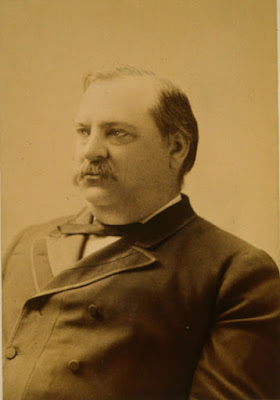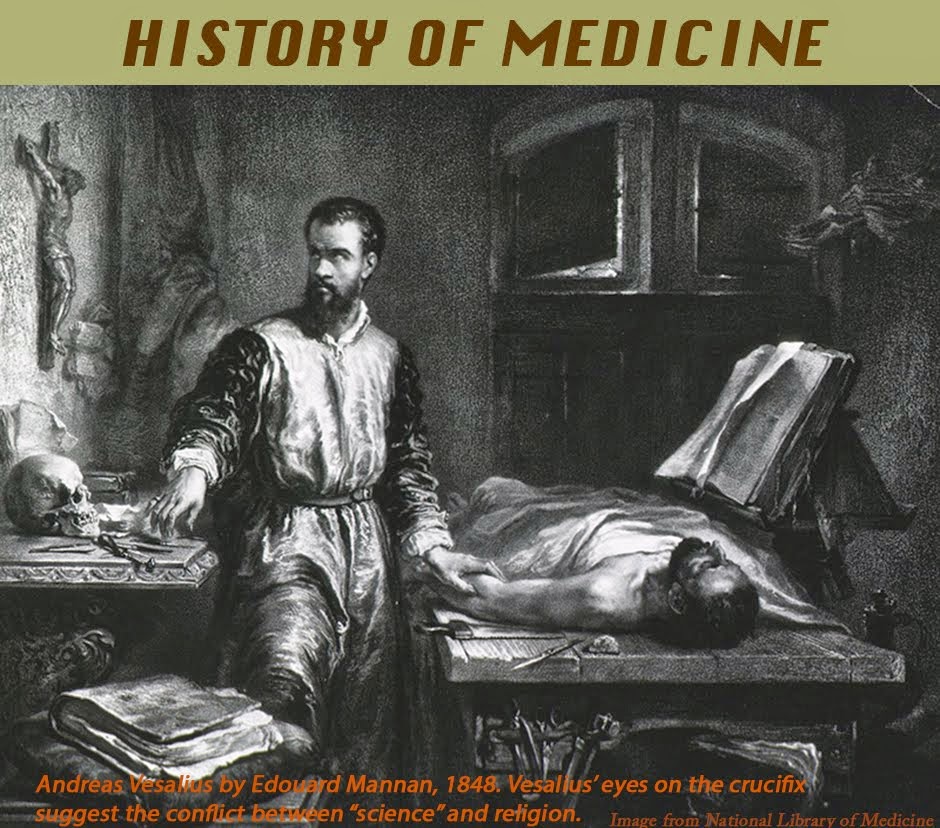Presidential Disability:
The Case of Grover Cleveland and the
Twenty-fifth Amendment
On June 30, 1893, President Grover Cleveland called for a special session of Congress to meet on August 8. The economy was slumping badly and he urgently wanted Congress to repeal the Sherman Silver Purchase Act. But why wait until August? Because he had scheduled a leisurely cruise up the Hudson River to his summer retreat at Buzzards Bay, he said.
The truth was different. In May, Cleveland had noticed a roughening in his mouth. An examination by Dr. Robert O’Reilly, his personal physician, revealed a quarter-sized, ulcerating lesion on the roof of his mouth. Dr. Joseph Bryant, from Bellevue Hospital
 |
| Dr. Joseph Bryant (Nat. Library of Medicine) |
Medical College, took a biopsy and sent it to William Welch at Johns Hopkins. Welch considered the tissue malignant, and Bryant urged immediate surgery. Cleveland felt, considering the economic crisis, that news of an operation for cancer would be destabilizing. Accordingly, he chose to have the tumor removed secretly aboard a yacht, the Oneida, loaned by a wealthy friend.
On the morning of July 1, 1893, the Oneida left the New York pier. On board, beside the President, were the surgeon, Dr. Bryant, who had authored a textbook on surgery and had reported the world’s largest series of maxillary (upper jaw, roof of mouth) resections, John Erdmann, a surgeon who worked with Bryant, Dr. William Keen, a well-known neurosurgeon from Jefferson Medical College, Edward Janeway, a prominent
 |
| Dr. Edward Janeway (Wikipedia) |
internist from Bellevue, Ferdinand Hasbrouck, a dentist and anesthesiologist, and Dr. O’Reilly, the President’s personal physician who was to administer ether.
The surgery began at 12:50 PM. Anesthesia was a worry, as the President was fifty-six years old, was obese, and had a short, thick neck. Initially, under nitrous oxide and locally injected cocaine anesthesia, Hasbrouck extracted two teeth and Bryant made an initial incision over the hard palate. Then, as Reilly administered ether, almost the entire upper jaw was removed along with some soft palate. A large gelatinous mass in the maxillary sinus was diagnosed by Dr. Welch as carcinoma. Gauzes were applied and the patient awakened. The surgery lasted just over one hour, with about six ounces of blood lost. Just over two weeks later Cleveland returned to the Oneida for a resection of margins thought to harbor residual tumor.
The President recovered at Gray Gables, his home in Buzzards Bay. His speech was muffled and indistinct and his left cheek hollow. The team requested Dr. Kasson Church Gibson, a New York dentist, to make a prosthesis. Gibson had studied with Dr. Norman Kingsley, known as the “father” of orthodontics. Kingsley was the first to use a vulcanized rubber obturator (an object to fill a gap) in a case of cleft palate. He founded the New York College of Dentistry and wrote the first text on orthodontics. His apprentice, Gibson, after dentistry school, opened a practice in New York and was on the faculty of the University of Maryland School of Dentistry. He had collaborated with Bryant on previous cases. Gibson produced an obturator so perfect that the President’s face and speech appeared normal, even to friends, and he had no difficulty eating.
 |
| Pres. Cleveland, 1904 (Smithsonian Portrait Gallery) |
 |
| Pres. Cleveland, 1888 (Library of Congress) |
To explain the President’s temporary weakness and weight loss, Cleveland’s staff gave out reports that he suffered from rheumatism and bad teeth. One reporter published a true account, obtained from an inadvertent slip by Hasbrouck, but the coverup was otherwise so complete that the report never gained credence and the full story did not emerge until after Cleveland’s death.
Coverups of presidential illness have been fairly common. Concealing the illnesses of Wilson, Roosevelt, Eisenhower, and Kennedy are examples. Most recently, when President Trump was hospitalized, the issue of a temporary incapacitation arose. A mechanism to deal with incapacity of the president, temporary or otherwise, is contained in the 25th amendment to the Constitution, written well after Cleveland’s time.
The idea of a plan in case of temporary presidential disability originally came from President Eisenhower. Eventually, Lyndon Johnson formally asked Congress to address the issue with a constitutional amendment. The amendment from Congress was ratified in February 1967. But does it address a central issue?
A radiologist at Stanford University, Herbert Abrams, has pointed out that Congress never solicited medical opinion (from the AMA, for example) when drafting the amendment. In addition, the amendment says nothing about obtaining medical consultation in cases where a president is unable to perform his duties but will not or cannot say so. It reads only that “the Vice President and a majority of the principal officers of the executive departments or of such other body as Congress may by law provide” transmit to Congress their written declaration of the President’s incapacity. Abrams felt that though medical advice would almost certainly be sought, the mechanism should be spelled out. He suggested a six-man panel of physicians consisting of two internists, two neurologists, a psychiatrist, and a surgeon to provide an objective medical opinion if needed. Each would serve a six-year term, with a rotational replacement schedule, the appointments to be made by a complicated process to ensure impartiality.
Perhaps renewed discussions in Congress will lead to clarification of this issue. Meanwhile, since staffs are generally loyal to their presidents and a cabinet majority is needed to invoke the 25th amendment, some degree of coverup may well be a feature of future presidencies.
SOURCES:
Ferrell, Robert. Ill-Advised: Presidential Health and Public Trust. 1992; Univ of Missouri Press.
Keen, W W. The Surgical Operations on President Cleveland in 1893. 1917; George Jacobs Co.
Seelig, M G. “Cancer and Politics: The Operation on Grover Cleveland” 1947; Surg Gyn Obst 85: 373-6.
Murray M, Pappas T, Powers D. “Maxillary Prosthetics, Speech Impairment, and Presidential Politics: How Grover Cleveland Was Able to Speak Normally after His “Secret” Operation.” 2020; Surg Journal 6: e1-e6.
Abrams H. “Can the Twenty-fifth Amendment Deal with a Disabled President? Preventing Future White House Coverups.” 1999; Presidential Studies Quarterly 29 (1): 115-33.
